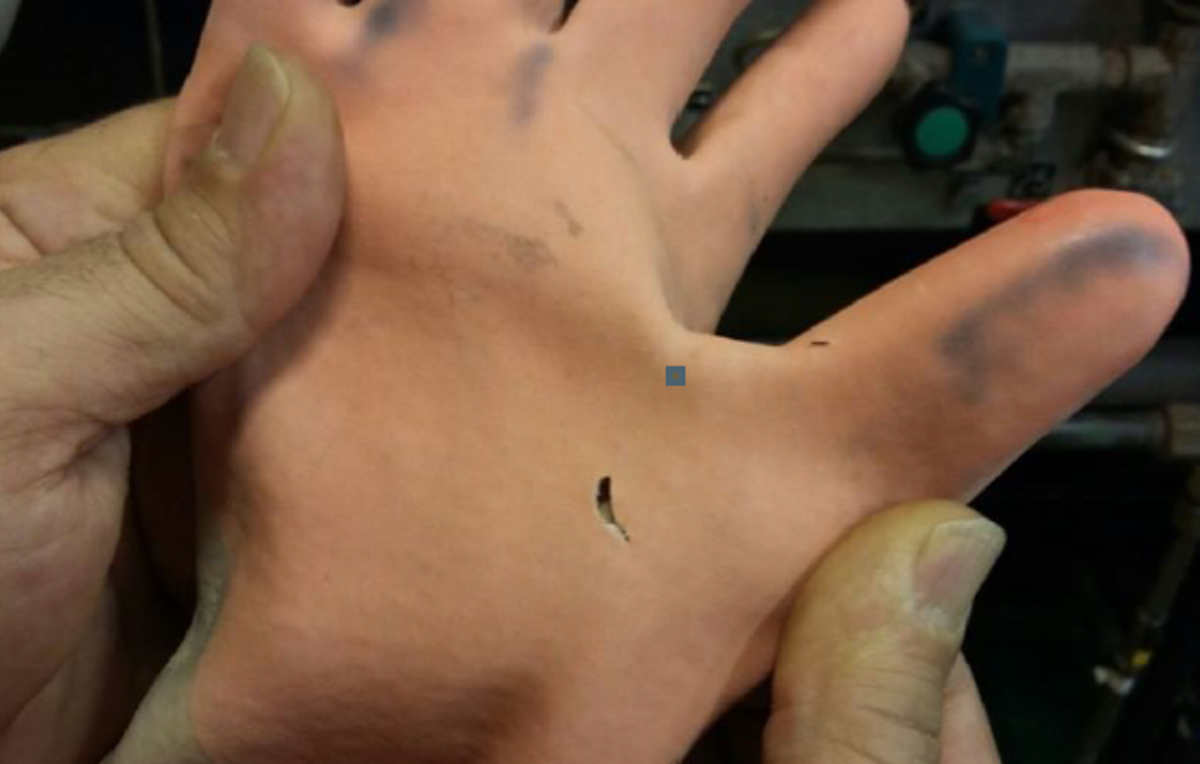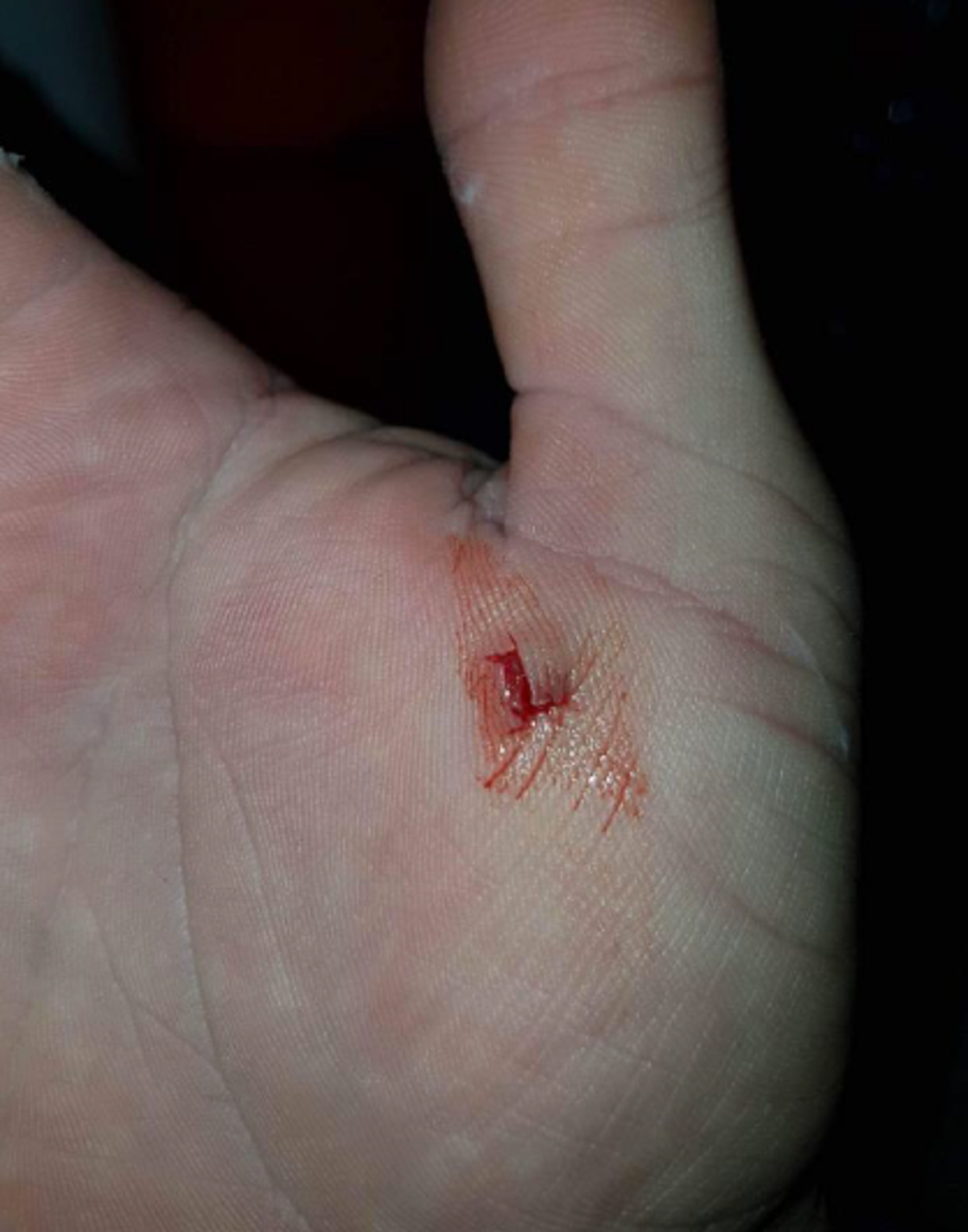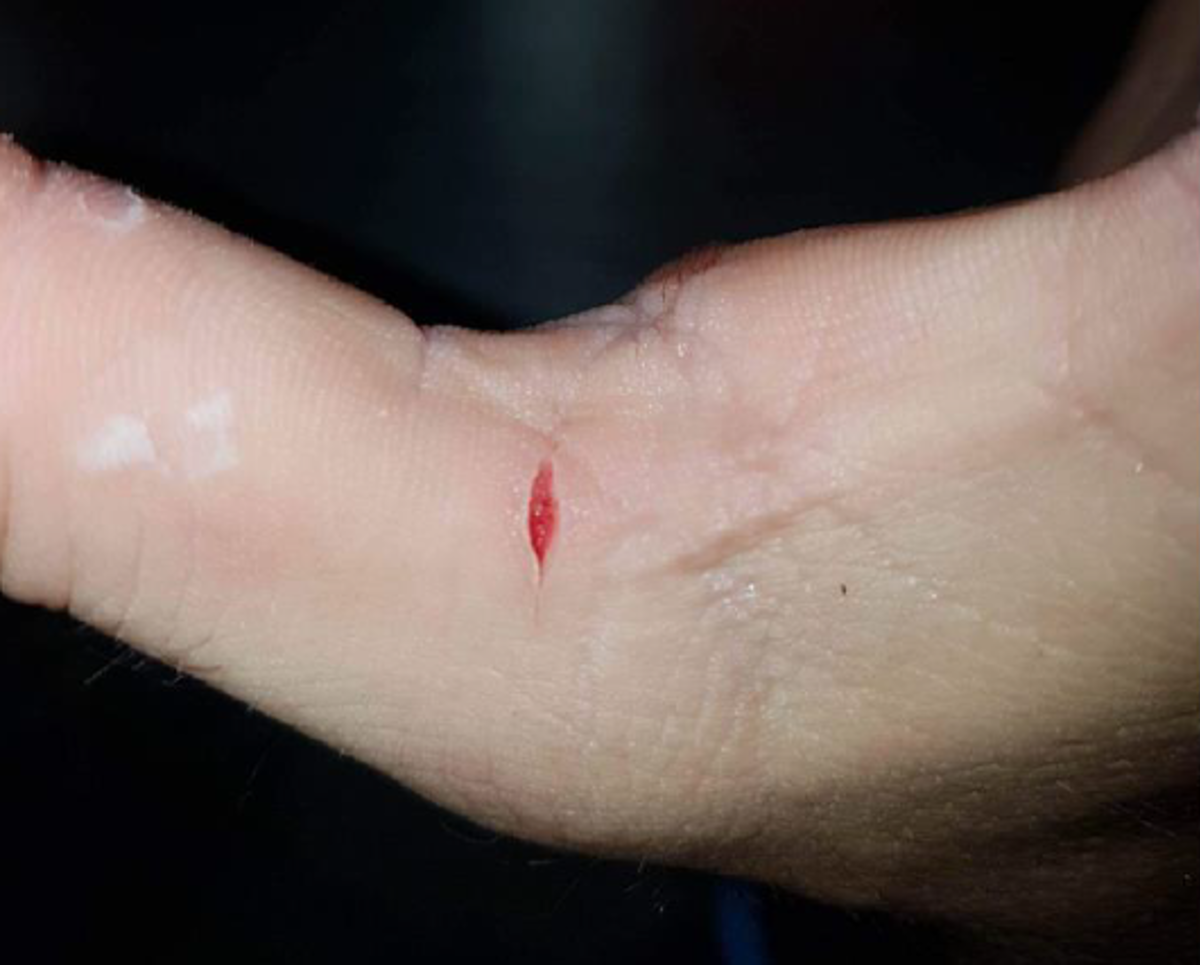Hand injury during diving operations
- Safety Flash
- Published on 22 November 2016
- Generated on 25 December 2025
- IMCA SF 31/16
- 3 minute read
Jump to:
A Member has reported an incident in which a diver received a hand injury during diving operations.
What happened?
The event occurred during joint rectification activities on a riser flange at 169 msw, following a report of a leak during commissioning. The divers were de-tensioning the flanges, and once the flanges were separated, the ring joint became free and fell off the middle of the flange to the seabed. A diver went to recover the ring joint from mud unaware that it was damaged (see photo showing details of damaged ring joint).
The damaged part of the ring joint punctured the divers’ soft neoprene glove and caused two small penetration wounds to his right hand, between the thumb and index finger (see below). The injured diver returned to the diving bell and received first aid (the wounds were washed with fresh water and cleaned). The bell run was terminated.
Once the bell was locked on, the injured diver returned to the Sat chamber and received further treatment by the Diver Medic Technician (advised by on-board doctor and company Hyperbaric Doctor) including:
- Further thorough cleaning of the wounds with antiseptic solution, an application of antibacterial cream and the dressing of the wound.
- Tetanus vaccination and oral antibiotics as preventive measures.
Our member noted the following:
- The ring joint had been installed on a previous diving project by another diving subcontractor.
- The ring joint came free and fell down into the mud as soon as the flanges were separated.
- There was no chance for the diver to ascertain the ring joint conditions.
- This occurrence was unlikely – it was the first occurrence in over twenty years of a similarly damaged ring joint.
- The direct causes of the incident were found to be:
- improper installation of the ring joint during a previous diving campaign with consequent deformation and damage of the latter
- ring joint falling to the seabed
- mud on the seabed
- Other causal factors identified were:
- great difficulty in ascertaining the condition of the ring joint before recovery from the mud
- the diver’s gloves (fit for diving purpose) were not designed to protect against cut and perforation.
The following actions were taken to avoid the recurrence of the event:
- Before recovery from mud by hand of potentially damaged equipment having possible sharp edges or points, divers should:
- wear anti-cut/anti-perforation gloves
- perform a preliminary check of the equipment using a hook.
Related Safety Flashes
-
IMCA SF 28/16
18 October 2016
-
IMCA SF 28/16
18 October 2016
-
IMCA SF 28/16
18 October 2016
-
IMCA SF 28/16
18 October 2016
-
IMCA SF 28/16
18 October 2016
-
IMCA SF 28/16
18 October 2016
IMCA Safety Flashes summarise key safety matters and incidents, allowing lessons to be more easily learnt for the benefit of the entire offshore industry.
The effectiveness of the IMCA Safety Flash system depends on the industry sharing information and so avoiding repeat incidents. Incidents are classified according to IOGP's Life Saving Rules.
All information is anonymised or sanitised, as appropriate, and warnings for graphic content included where possible.
IMCA makes every effort to ensure both the accuracy and reliability of the information shared, but is not be liable for any guidance and/or recommendation and/or statement herein contained.
The information contained in this document does not fulfil or replace any individual's or Member's legal, regulatory or other duties or obligations in respect of their operations. Individuals and Members remain solely responsible for the safe, lawful and proper conduct of their operations.
Share your safety incidents with IMCA online. Sign-up to receive Safety Flashes straight to your email.


